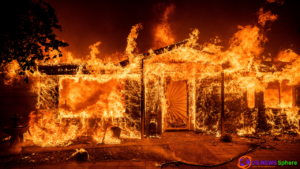Supreme Court Upholds Biden’s ‘Ghost Guns’ Regulation
In a historic decision, the U.S. Supreme Court has upheld Biden’s ‘Ghost Guns’ regulation, reinforcing the federal government’s ability to regulate untraceable firearms. The 7-2 ruling ensures that ghost guns—privately assembled firearms without serial numbers—are subject to federal oversight, marking a major step in the fight against gun-related crimes.
What Are Ghost Guns?
Ghost guns are homemade, untraceable firearms typically assembled from kits or created using 3D printers. Because they lack serial numbers, these weapons are difficult to trace, making them attractive to criminals and individuals prohibited from owning firearms.
A recent report from the Bureau of Alcohol, Tobacco, Firearms and Explosives (ATF) revealed that over 20,000 ghost guns were recovered from crime scenes across the U.S. in 2023, marking a sharp rise from previous years. This surge has raised concerns among law enforcement agencies and policymakers about the potential risks posed by these unregulated weapons.
Ghost Guns vs. Traditional Firearms
| Feature | Ghost Guns | Traditional Firearms |
|---|---|---|
| Serial Number | No | Yes |
| Traceability | Difficult to trace | Easily traceable |
| Assembly | Can be built at home | Manufactured professionally |
| Background Check | Not required (before regulation) | Required |
This table highlights why ghost guns have been at the center of heated debates about firearm regulations and public safety.
Supreme Court Ruling: A Major Win for Gun Control Advocates
The Supreme Court’s ruling is a major victory for the Biden administration’s efforts to curb gun violence. The decision supports the Bureau of Alcohol, Tobacco, Firearms and Explosives (ATF) in enforcing regulations that treat ghost gun kits as firearms, requiring background checks and serial numbers.
Justice Neil Gorsuch, writing for the majority, stated that the Gun Control Act of 1968 provides legal grounds for regulating firearm kits that can be easily converted into fully functional guns. This overturns a previous lower court ruling that claimed the ATF overstepped its authority.
Dissenting Opinions and Opposition
Despite the ruling, some conservative justices opposed the decision. Justice Clarence Thomas and Justice Samuel Alito dissented, arguing that the ATF’s regulation represents executive overreach and that the original Gun Control Act does not explicitly cover unfinished firearm parts.
Gun rights groups have also voiced opposition, asserting that the ruling infringes on Second Amendment rights. Some states, such as Texas and Montana, have already introduced legal challenges aimed at limiting the ruling’s reach.
Impact on Gun Safety and Law Enforcement
Law enforcement agencies and gun safety advocates have praised the ruling, emphasizing its potential to reduce gun-related crimes.
According to the Bureau of Justice Statistics, ghost guns accounted for over 25,000 weapons recovered at crime scenes in 2023—a sharp increase from previous years. With the new regulations in place, sellers and manufacturers must adhere to stricter guidelines, including:
- Mandatory background checks for buyers.
- Serial number imprints on all firearm parts.
- Increased federal oversight on firearm kits and parts.
This decision provides law enforcement with stronger legal tools to prevent unregulated firearms from falling into the wrong hands.
Conclusion: A Landmark Decision for Public Safety
The Supreme Court’s decision to uphold Biden’s ghost gun regulation represents a significant step forward in the fight against untraceable firearms. By enforcing stricter controls on these weapons, the ruling aims to enhance public safety and prevent illegal firearm trafficking.
With gun violence remaining a critical issue in the United States, this decision sets an important precedent for future firearm regulations. As law enforcement agencies continue to tackle the rise of ghost guns, the ruling provides them with stronger legal tools to prevent these weapons from falling into the wrong hands.





